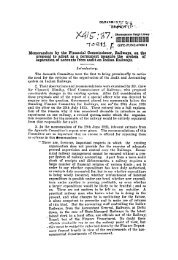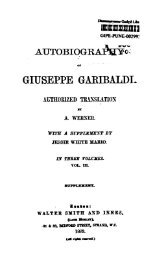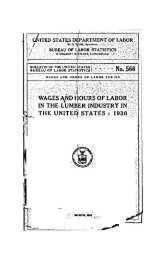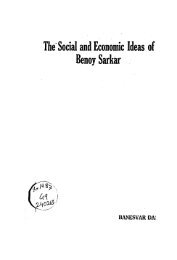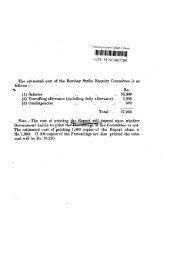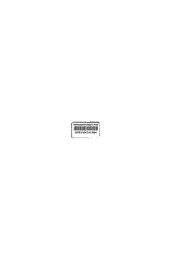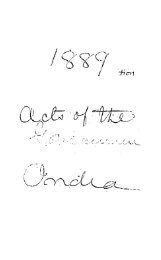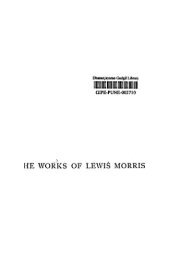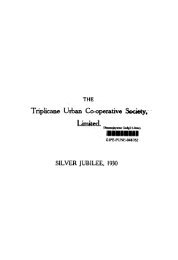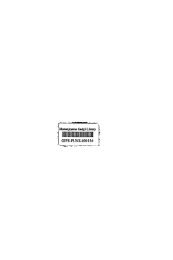Create successful ePaper yourself
Turn your PDF publications into a flip-book with our unique Google optimized e-Paper software.
I N PI -\N OPIN ION February 13th, 19:15<br />
The Kanamia Moslem League in Capetown has<br />
decided to raise £:1,000 to meet the requirements<br />
of the rismg geneIatlOl1 of IndIans III Capetown<br />
They have secured a plot of ground, on whIch thej·<br />
propose to erect a school, 111 whIch provIsion IS to<br />
be made for the edncatJon of theIr chIldren in<br />
EnglIsh, Ul'ciu and Gnjdl'dtJ. A SnbSCl'lptlOn list<br />
has been opened, aml IS headed WIth a donation of<br />
£100 Over £700 have b,t'en subS"cnbed to the<br />
fund already.<br />
QUEshON OF MAHOMEDAN WIVES<br />
Off HE judgmellt given by the Supreme Court<br />
11 ('Natal Pro~incial DIvIsion) -in the case of<br />
{mmigrants Appeal Board vs. Ayesha, the report<br />
of which 18 reproduceu elsewhere in this Issue.<br />
is of very great interest to the Ifiulan community.<br />
It brings to our memory vividly the PaSSIVe Resistance<br />
struggle; with all its _woes, that resulted -from<br />
the j'adgment of Mr. Justice Searle in March 1913,<br />
in the lllaj,ter of an appeal by Hassen Esop against<br />
the Minister of the InterlOr for an order restraining<br />
the respondent £rom deporting to India Bai Miriam.<br />
the lawfuJ wife of the aPl?licant. It was thIS judgmtmt<br />
that, for th-e first time, opened the eyes C?f the<br />
IndIan community to the fact that _according to the<br />
then existing law the wife of every HIndu and<br />
M;ahomedan was in South Africa fnegaUy, and;<br />
therefore, at the mercy of the Goverriment, whose<br />
grace alone could enable her to remain in this<br />
country. The said law did not admit the<br />
legality of marrIages celebrated - according to therecognized<br />
Indian religions.<br />
This was natnrally<br />
received with a severe shQck by the community, for<br />
it n.B an insult not only to the womanhood of<br />
India but to ;the Indian nation -hi so far as non<br />
Christia,ns were concerned; and as no steps to amend<br />
the law were 4tken by the Government the community<br />
had no other course but to resort to<br />
Passiv.? ResistaI\ce in which women also participated<br />
and Valiamma, whose name will never pe forgotten<br />
by the Indian commumty in South Africa,<br />
sacrificed h,el~ life. It was after this offering of a<br />
life and much suffering that the Government condescended<br />
to bend and a settlement was arrived at<br />
between the Government-and the Indian community<br />
with the passing of the 'lndJan Relief Act of 1914,<br />
which Act amended Section 5 (g) of_ the Immigrants<br />
Regulation Act 22 of 1913 which was the ca.use of<br />
all the trouble.<br />
The question' asked by the IminigrantB Appeal<br />
Bolird in the present case we are referring to in this<br />
article waS: ., Is the Indian woman Ayesha a prohibtted<br />
lmmigra~t 'in view of the provisior.s of<br />
Section 5 (g) of the Irp.migrants Regulation A~t 22_<br />
of 1913, as amended by Section 3 (2) of the Indians<br />
Relief Act 22 of 1914. "<br />
The Section referred to above, in so far as it affects<br />
the present case, reads as follows :-<br />
" , the wife' shall include anyone woman'<br />
between whom and the exempted person melltioned<br />
therein there exists a union recognized<br />
as a marriage under the tenets- of an Indian<br />
_ religion notwithstandiI)g that by those tenets<br />
the union of that exempted person with other<br />
-women at the same time would be recognized<br />
as ~ marriage : Provided that no woman shall<br />
be deemed to be the wife of such exempted<br />
pel'son-(a) If such a nlllon existf! bdween Ilim<br />
anu any other woman \"d1O resitle,. in any 1'1'0-<br />
YlllCe, or (b) If such eX"Illptetl l'r "~on 'has III<br />
allY Pl'ovince otI~pring IlY any otlier \\ !Jlll.1n<br />
,,110 is stIll living '(<br />
In answering the qnt',-tlOll Pilt hy the Bndnl Il,<br />
the negatlve .Tudge-Pres1dent ~1I John Do\(' \\"11"01/<br />
stnd the language of the sectIOn ",\'i pl.ulI and<br />
obvions, and MI'. JustIce Carler conclllled Hut<br />
Mr. Jushce Tatham was doubtful as to the lllt\1111l1g<br />
of the section and thought that tIlt' Sl'dlOl1 waambignonsly<br />
wordell. IllS LorcblllP tllOlll'ht "that<br />
the Act really meant that an Il1llt,m couM only<br />
Introduce a Wife If he kept one WOll1,m to be tredt"li<br />
as his wife III terms of the Imnllgl'a!Jon 1a\\s." It<br />
this would be the interpretation gl\ en to the Act it<br />
would agam mean that marrIages accol'Jing tn<br />
Ma,homedan Law are not recognized. 'Vhethel' two<br />
or four a Mabomedan's wives are h1s Ltwfnl WIve"<br />
accordmg to the tenets of his religion and as 'Inch<br />
they mnst be recognized. That should be the purpose<br />
of the law. The restrictIOn, however. is J1I<br />
regard to the IntroductIOn ot snch WIves, and that,<br />
as the Judge President has s,lid, is YeI'Y clear,<br />
i.e., it allows the person to select only one of his<br />
wiws, at a time, to bring into thiJ country, and that<br />
too not in all circumstances, for, the prOVISOS in the<br />
section prevents him from doing so jf at the time<br />
of the attempten introduction 'a wife by a similar<br />
union is residing in South Africa, 01' if there<br />
are children from a similar union allve in South<br />
Aftica. This is the present P9sition of the law.<br />
:t\1AHOMEDAN WIVES AND IMMIGRATION"'<br />
ST~TED CASE BEFORE SUPREME COURT<br />
AN INTERESTING JUDGMEST<br />
The case of Immigrants Appeal Board vs: AYerlha<br />
was brought before Sir John Dove Wilson, Judge<br />
President; 1\11'. Justice Carter; and Mr. Justice<br />
Tatham in the Supreme Court (Natal Provincial<br />
Division). /<br />
This was a case stated by the Board for the<br />
decision of the Supreme Court. The Board<br />
found that Ayesha was born in Imlia and is not<br />
entitled to enter South Africa unless she can prove<br />
that she is the wife of Cassim Ebrahim, an Indian<br />
domiciled in Natal. In 1915 Cassim Ebrahim contracted<br />
a marriage with one Fatima at Dundee under<br />
Mahommedan rites. Fatima in 1921 was allowed to<br />
go to In:dia on a visit, with the right to return, and<br />
she is still in India. Cassim Ebrahim went in 1923 on<br />
a visit to India and married Ayesha there III Januray,<br />
1924. He brought her out and apPlied for<br />
her admission into Natal.<br />
The Board found that the existing union between<br />
Cassim and Fatima precludes the recognition of any<br />
other woman as his wife. The question asked of<br />
the Court by the Board was this: "Is the Indian<br />
woman Ayesha a prohibited immigrant in view (jthe<br />
provisions of Section 5 (g) of the Immigrant.<br />
Regulations Act 22 of 1913, as amended by Section 3<br />
(2) of the Indians relief Act 22 of 1914,"<br />
Mr. J. J. J- Sisson instruc;ted by Messrs. C. P.<br />
Robinson and Goulding, appeared for the woman,<br />
and Mr. W. S- Bigby, K. C., Attorney-General,<br />
instructed by Messrs. D. A. Shaw and Co., for thp<br />
Board. The question in dispute was really thIS<br />
Under the- 1913 Act a wife of a domiciled person<br />
was not a prohibited immigrant provided that ihe<br />
was married to the husband by a monogamous.<br />
marriage. This excluded all Hindu and ~Iahomme-



